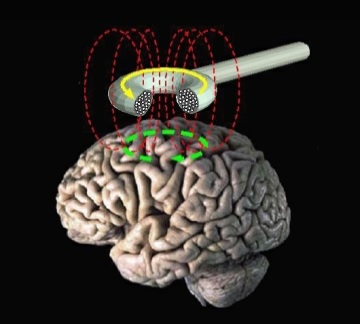Over at The Daily Beast, Hannah Thomasy has a great write-up of both the history and the promise of TMS (Transcranial Magnetic Stimulation).
You’re likely aware of that acronym, and while I’d definitely recommend reading her whole piece, here are some highlights:
a. TMS is built on a discovery from NIH research that the left prefrontal cortex seems to be underactive in people with depression.
The thinking is that if you can stimulate that region back into activity, that might help alleviate depression.
b. As such, TMS makes some assumptions of depression that differ from more standard explanations relating to brain biochemistry (e.g. neurotransmitters like serotonin and norepinephrine).
These changes can take awhile to filter down to general psychiatry, and it’s often a heavy lift to convince practitioners to consider more innovative approaches.
c. The problem of bias. This has been significant.
In clinical studies, TMS has generated significant improvements in a decent percentage of treatment-resistant cases.
However, the placebo effect seems to be unusually high.
For example, one study showed that people getting zapped with the placebo saw just as much improvement as people getting zapped with the real deal.
Of course, there have been more hopeful studies, but until recently, the placebo effect was a real concern in promoting TMS as a game-changing tool.
Further, there is no standardized TMS treatment in trials.
For example, some trials employ magnetic pulses that differ in location, strength, frequency etc.,
So scientists can’t yet say, “This is the way to do it to achieve best results.”
d. The traditional means is, frankly, a time-intensive — sometimes prohibitive — ask of patients.
Traditional TMS asks you to come in multiple times a week for up to 2 months.
That’s tough for a lot of people (pretty much everyone).
HOWEVER.
I’ve written before about some amazing new advances in TMS technology.
And Thomasy goes through some of these.
One such is iTBS, which was only approved in 2018.
The great thing about this form of TMS is that it cuts treatment time from 37 minutes per session to 3 minutes… and studies show it’s as effective as traditional TMS.
Hooray.
But the most exciting new development is Stanford Neuromodulation Therapy (SNT).
It uses iTBS along with a few other tweaks, based on brain imaging, and so far, seems to be truly effective at reducing symptoms.
And by that I mean — a small clinical trial showed far superior results than the traditional form.
After one month of treatment, 70% of patients experienced a reduction in symptoms, and incredibly importantly, only 7% of those in the placebo group had any kind of reduction.
That’s significant.
Because as I said earlier, one of the knocks on TMS is the placebo effect.
But the gap in the SNT method (70% reduction in treatment group vs. 7% in placebo) is just astonishingly good and seems to indicate that SNT is really onto something.
I would read this article from Stanford on it, and man, it’s just amazingly hopeful.
So as Dr. Nolan Williams writes, “It could be a game changer,” and let’s pray that researchers are onto something.
Finally, here’s a note I want to add.
For a lot of Christians who look at all this with a skeptical eye, any kind of mixed study (for example, small differences between treatment or placebo group), or abandoned theory, is proof (to them) that we can’t treat this condition medically.
That’s tragic.
Has anyone solved Alzheimer’s yet?
No.
For decades and decades, scientists have been trying to isolate the cause and (to be blunt) the cure (or at least the help) of this disease, and yet its complexities continue to elude us.
The brain is just enormously complex.
But I don’t think there are many Christians out there who would deny Alzheimer’s is a medical condition.
Christians aren’t saying, “Let’s abandon Alzheimer’s research because it hasn’t been solved and only memorizing Bible verses can cure it.”
No, we accept that something is going on in the body that needs fixing.
It’s not about something that’s going on with our spirituality that needs fixing.
We see Christians with dementia, ravaged by a disease — not because of faulty spirituality, but a body that’s breaking down.
With mood disorders, obviously, many of the symptoms are different but just because we don’t recognize the shifts as easily, these changes in the brain or the body are no less real.
They require professional, medical help.
And with that…
Find a psychiatrist here.
Find a therapist here.

